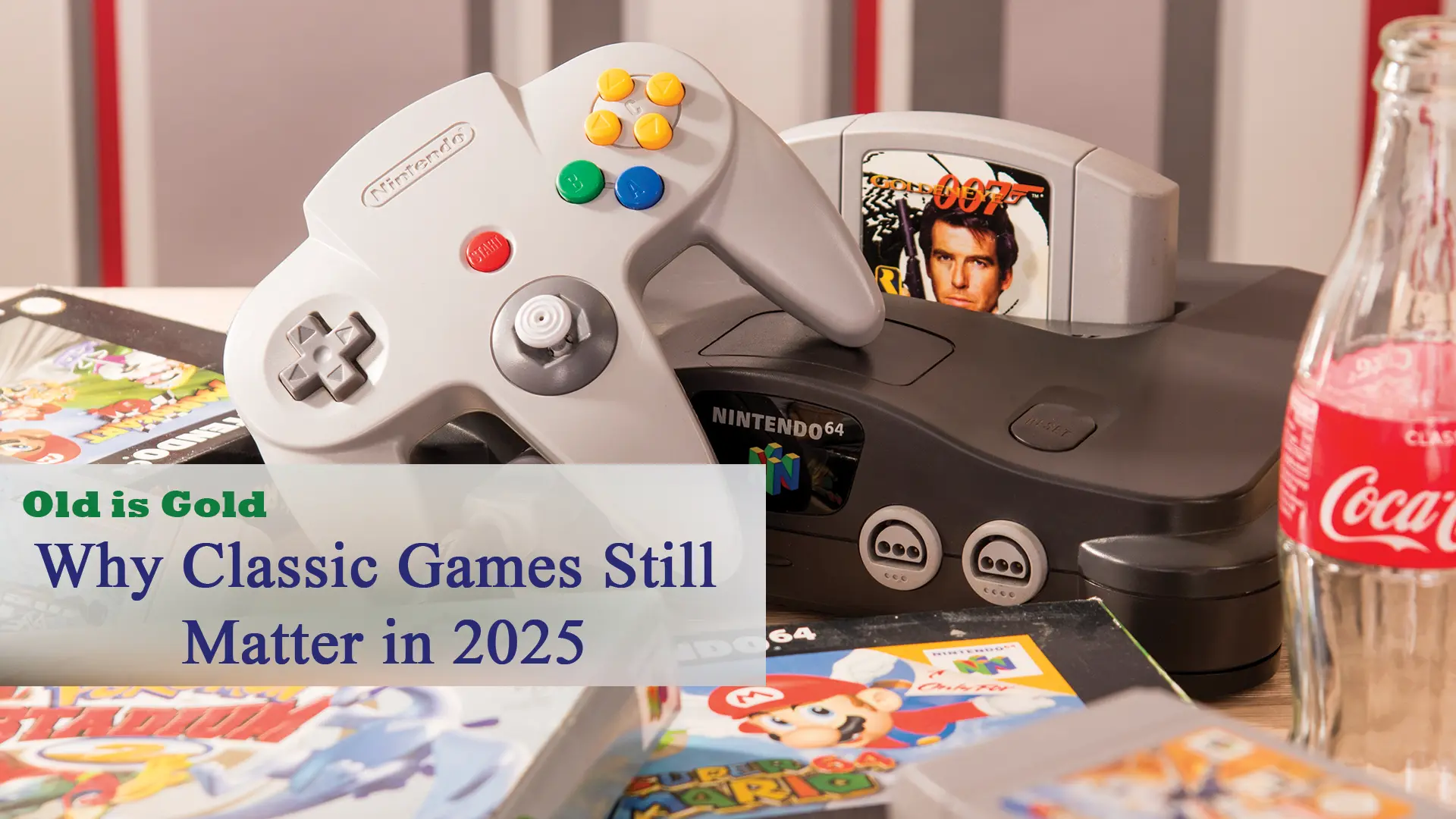Popular belief suggests that the past is little more than a faded memory, given that artificial intelligence is changing everything in game development, virtual reality is making immersion so realistic, and online multiplayer worlds now span continents. By 2025, however, classic games will come alive more than ever.
From pixelated platformers to first-time experiences of 3D adventure, these games still have their loyal fans around the world. Then, what makes these kinds of games, dating back to the 80s, 90s, and early 2000s, somehow still matter in the fast-paced gaming world of today?
Let’s take a look at why classic games are still relevant in 2025, and why they’re still considered to be such an integral part of gaming history and modern culture.
Timeless Gameplay That Still Feels Fresh
One constant in classic games that survives through the years is actually the gameplay. Although there have been changes at every level in the graphics and hardware, the essentials of fun, challenge, and creativity in the design remain the same.
Examples of such games are:
- Super Mario Bros. (1985)
- The Legend of Zelda (1986)
- Tetris (1984)
Even now, they seem to be good fun because they are built on solid mechanics instead of just having visual appeal. Very few of these majority titles have intuitive controls and addictive loops that draw players back to the same time and time again, catching players, even decades later.
Good game design doesn’t age; it develops, and classic games could be the best proof of that.
Simple Yet Challenging
With few resources for development, classic games were characterized by very small teams and primitive engines. This limitation became a blessing in disguise, granting us:
- Easy-to-learn
- Hard-to-master
- Cleverly designed levels
With names like Contra, Mega Man, and Castlevania, these games became notorious for their difficulty and strategic depth. They demand little in the way of tutorials and save points, instead confronting a player to think, react, and persist, which is more or less what retrospective games did.
The rewarding feeling of conquering a challenging level or defeating a boss isn’t something that most new games provide.
Building the Foundations of Modern Gaming
Almost all the game mechanics and genres found in the 2025 release calendar—open-world exploration, RPGs, and battle royales—have direct connections to classic titles.
Some examples include:
- Metroid (1986) formed the basis of the Metroidvania genre.
- DOOM (1993) set the standard for the modern-day FPS genre.
- RPG mechanics pioneered by Final Fantasy still exist today.
Classic games are not just an exercise in nostalgia for modern developers; they are reference points and textbooks for new titles.
Nostalgia: The Emotional Power of Memory
The power of nostalgia is undeniable. Old games link us with the past—simpler times, childhood adventures, and weekend marathons with friends or siblings.
In 2025, that generation will enter their 30s and 40s, having played games on 8-bit and 16-bit systems. They have the money now, and so they search for means to return to the wonders of childhood gaming. This motivates re-releases, remasters, retro consoles, and online collections.
Games are very important for the emotions that come with them, not just for themselves.
Modern Technology Enhancing Retro Play
It is rather ironic that classic games have made a comeback in the year 2025, aided by the advancements of modern technology. Now you don’t have to run around in search of an old NES or Sega Genesis to play your favorite classics:
- Emulators
- Mini consoles (SNES Classic, PlayStation Classic)
- Cloud gaming platforms (Xbox Game Pass, Nintendo Switch Online)
- Digital marketplaces (Steam, GOG)
Allowing players to enjoy easy legal access to hundreds of classic games on demand. Many also come with enhancements such as save states, HD rendering, and controller support—mixing old charms with new convenience.
Indie Developers Inspired by the Past
The new generation of indie game designers is inspired by an older game design philosophy. Free from the constraints of big budgets and publishers, many indie developers creatively exploit retro graphics and mechanics.
The following are some examples:
- Shovel Knight
- Celeste
- Undertale
- Hollow Knight
They may look old, but these games come with modern iterations, deeper stories, and accessibility options. This shows that retro means artful and focused, not that it is all outdated.
Cultural Significance and Game Preservation
These classic games represent our cultural and digital history. They embody the technology, art, and social ideas of the time. Preserving these games and playing them becomes like consulting an interactive history book.
In 2025, organizations and archivists are actively preserving game ROMs, soundtracks, manuals, and development notes, ensuring that each of these classics can be accessed by future generations for their study.
Classic games are more than entertainment; they represent human creativity.
Global Communities and Shared Memories
Some classic games have grown to foster global communities. From online discussions on Reddit threads, YouTube retrospectives talking about history, Twitch streams reliving the past, to Facebook groups, players gather to share discussions on favorite levels, speedruns, glitches, and memories.
Shared identity and collective nostalgia ensure the relevancy of such games. When you are playing, you know you are not alone. You’re part of a worldwide fanbase that crosses generational boundaries.
Remasters and Reboots Keep the Fire Alive
A second life has been bestowed upon many iconic names through remasters, remakes, and reboots. The essence of the originals is carried into these new adaptations and modern systems.
Popular examples include:
Resident Evil 2 Remake.
Final Fantasy VII Remake.
Crash Bandicoot N. Sane Trilogy.
Zelda: Link’s Awakening (Switch).
All of these introduce the legends to a new audience while providing a fresh means for veteran enthusiasts to relive their favorite adventure.
Bonding Across Generations
Any parent who grew up with games will find themselves introducing their children to those same classics in 2025. Be it teaching the child to catch his first Pokémon or seeing him/her try to beat Bowser for the first time, retro gaming is now a whole family endeavor.
This multicultural family connection promotes the inception of the old games into new traditions, thereby increasing their value.
Conclusion: Why Classic Games Will Always Matter
Classic games symbolize not only nostalgia and entertainment but also timeless masterpieces, cultural landmarks, and guiding learning tools for the future of gaming. In the year 2025, these games are still achieving success not for the sake of their age but for their worth:
- They teach design fundamentals
- They deliver pure gameplay
- They foster community
- They preserve game history
- They make emotional connections
So next time someone says a retro title is outdated, remember this:
Old is not just gold-it’s a legend. Classic games do matter, and they always will.

